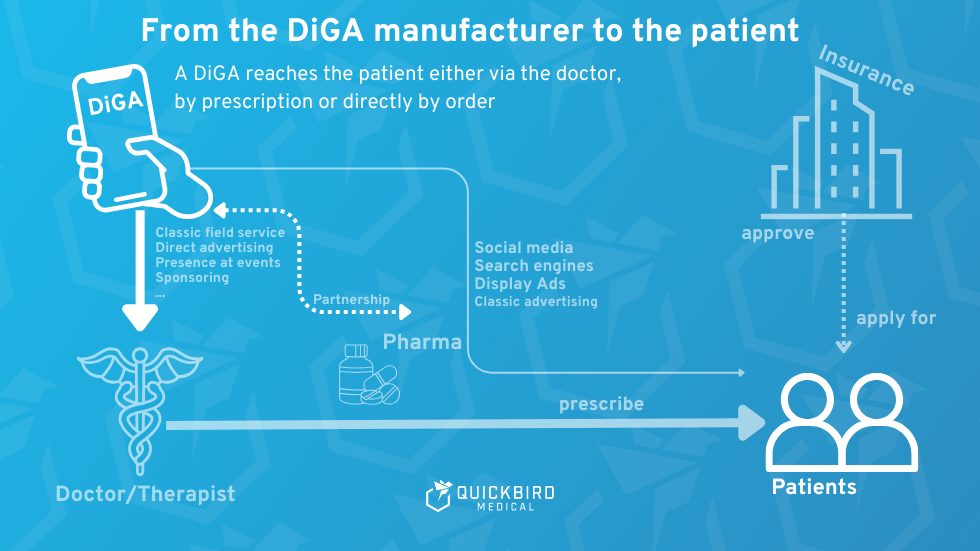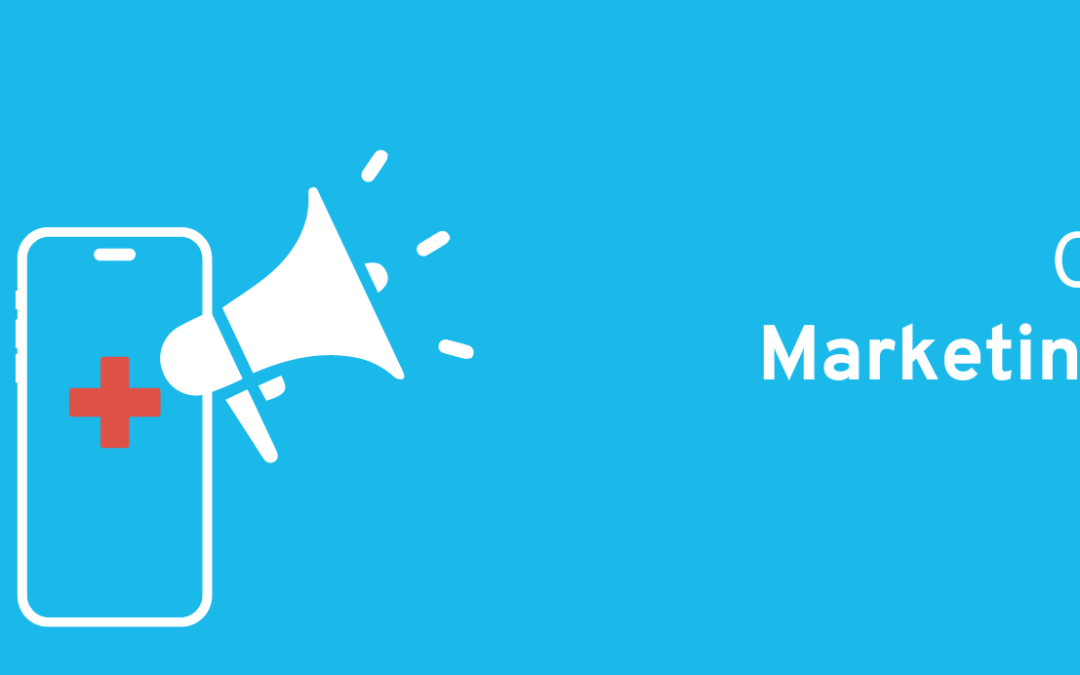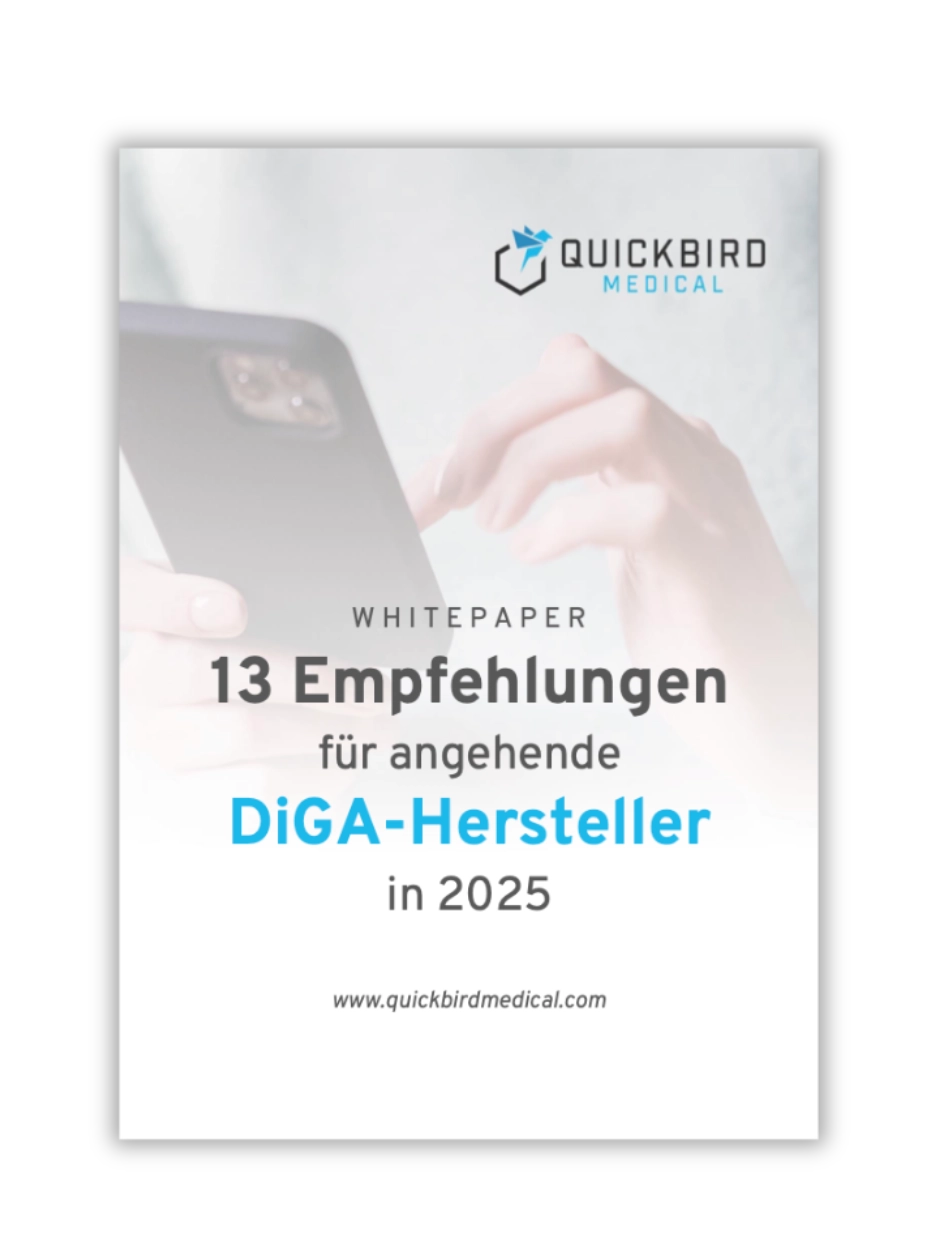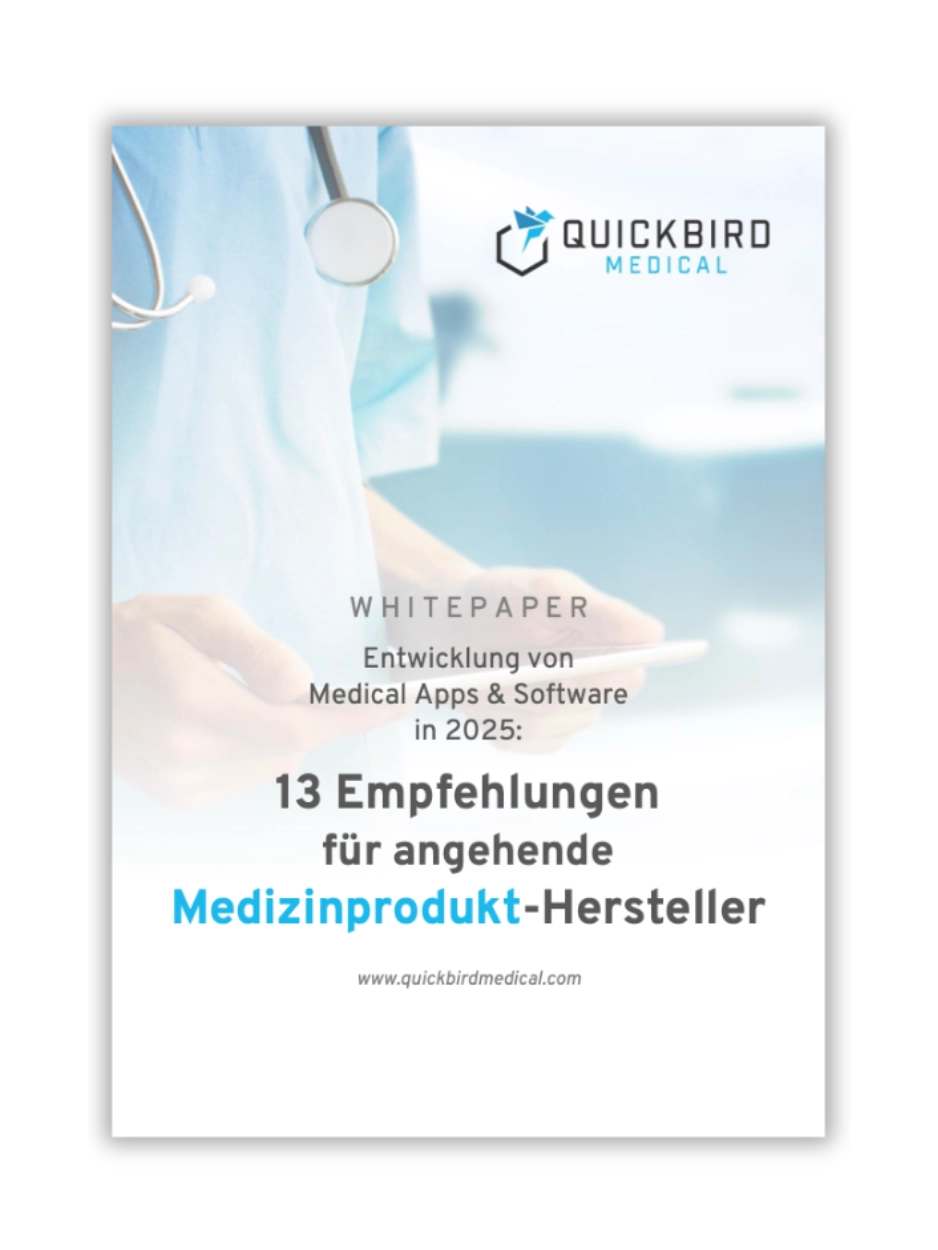Having fulfilled all regulatory parameters and been entered in the central DiGA directory, have all hurdles been cleared and a successful market entry guaranteed? Unfortunately not quite. Contrary to some wishful thinking, entry in the central DiGA directory itself does not lead to doctors prescribing your DiGA. Therefore, choosing the right marketing and sales tools is crucial in order to exploit the full market potential of the respective niche. The possibilities are manifold, the market environment complex. This article is intended to give you an overview and – as far as the necessary degree of generalization allows – provide helpful classifications along the way.
Overview
- 1. Patient or doctor – two possible addressees who are reached differently
- 2. Different channels are available for different target groups
- 3. Reception – many roads (do not) lead to the goal
- 4. Understanding the needs of patients and doctors
- Conclusion: Understanding and reaching the target group is the key to success
1. Patient or doctor – two possible addressees who are reached differently
The first fundamental question of any marketing strategy is the target group. In the case of a DiGA, two groups come into question:
- The patient who is looking for treatment options in general or a digital application tailored to their own needs in particular and can apply for these from their health insurance provider themselves, or
- The doctor who considers the DiGA to be a useful addition to a therapy and prescribes it to the patient.

The path from DiGA manufacturer to patient
2. Different channels are available for different target groups
According to Ernst and Young (EY), the doctor is currently the more common prescription channel, accounting for 90% of cases, and in some cases is also mandatory in the form of an initial assessment. The “balance of power” between the two target groups for DiGA marketing and sales seems clear at the moment: for most DiGA providers, the sales/marketing focus on the doctor as the prescriber of the DiGA will be particularly worthwhile. Nevertheless, it is worth taking a look at both target groups and how they can be reached. This holistic view will be the subject of the following section.
Marketing for the patient as a target group
A DiGA is generally a niche product. As a DiGA provider, you can make effective use of this clear demarcation of the target group(s), particularly through digital advertising. An overview of conceivable marketing channels that reach patients directly:
- Search engine advertising and optimization – By optimizing your own Internet presence for visibility in search engines (SEO), but especially by placing paid ads that are displayed to users of major search engines when they search for certain keywords, you can reach an extremely granularly defined target group in a very targeted manner. The reach achieved depends primarily on the budget used and can be calculated relatively reliably in advance. On the other hand, the conversion rate, i.e. the (relative) number of purchases actually made from the reach, is rather incalculable, especially for new products. In the case of DiGA, it is conceivable that this method could be used to reach patients in particular who are actively seeking information about their complaints, diagnoses and possible treatment options – but who are not necessarily thinking about a DiGA. For example, complaints and diagnoses can be used as keywords here.
- Social media marketing – Social media now plays a crucial role as an information and advertising platform. It could therefore make sense to show your presence here with your own DiGA. In general, the success factors are an authentic presence, regular content and the choice of the right channels. The platforms chosen must be just as suitable for the product and the target group as the type of appearance, the visual language, the wording and the content. A 50+ target group is addressed differently than Generation Z. The content mix for promoting a DiGA can conceivably consist of alternating product information and testimonials or user experiences. Two specialties of social media are also theoretically conceivable as part of the marketing mix: Collaboration with influencers (if they can credibly promote the DiGA as part of the target group) and the placement of advertising campaigns. (At this point, it should be noted that special care must be taken when creating advertising materials, texts, etc. that are aimed directly at patients. As a DiGA is always also a medical product, the German Therapeutic Products Advertising Act (HWG) applies here. For example, under no circumstances may it be suggested that the use of the DiGA is certain to be successful. Overly sensationalist formulations are therefore also taboo on social media, otherwise there is a risk of severe penalties.
- Display advertising – Here, freely customizable advertisements are displayed between the actual content on websites that are generally well frequented (e.g. news portals). Here too, most providers (where the choice is greater than with search engines or social media) allow you to filter which people with which interests and which demographic characteristics should see the ad. The costs here also depend on the reach achieved – but the wastage here is relatively high. In the specific case of a DiGA, there is also the fact that it competes with numerous other advertised products for a limited amount of attention.
- Traditional mass media – Of course, digital products can also be advertised in traditional, analog channels (TV, radio, print, etc.). However, there are various points that tend to speak against this approach – in contrast to all digital channels, there is no possibility of filtering the audience in a targeted manner apart from the selection of the medium itself, and there are also no instruments for measuring success and analyzing results. The investment in the production of the media itself (radio spots, TV clips, etc.) is very high, as is the cost of playing them out. On the other hand, there is a high proportion of “dead” reach.
- (Advertising) partnership with health insurance companies – Theoretically, cooperation with health insurance companies is also a conceivable way to reach patients directly. After all, they represent the interface between patients and the healthcare system and have an extensive communication network with the insured. However, it is questionable how they can be convinced to cooperate: At least the statutory health insurance funds cannot (any longer) hope for an advertising effect, as they are obliged by law to reimburse the DiGA anyway.
Sales and marketing for the doctor as a target group
At 90% of prescriptions, the medical profession is a much more important target group. This target group can be reached in particular through channels that differ little from those of traditional pharmaceutical sales in the area of DiGA marketing/sales.
- Direct sales: traditional sales force – Doctors are used to being visited regularly by sales representatives from the pharmaceutical industry. Personal contact with a fixed and physically tangible contact person creates trust and thus a bond. In principle, a DiGA manufacturer can also take this approach to establish an application in the medical profession. Setting up a complete field service network is unquestionably associated with not inconsiderable costs. However, Marcus Bergler, an expert in DiGA sales, has plausibly calculated in his article that it can certainly pay for itself. This sales channel is presumably the one that best suits the medical profession, as they are already familiar with it from the pharmaceutical industry.
- Direct sales: together with partners – An interesting trend can also be observed in this context: DiGA start-ups are joining forces with pharmaceutical companies in various forms, for example Kalmeda’s cooperation with Pohl-Boskamp or HelloBetter and Ratiopharm. Pfizer and Roche are also showing great interest in the DiGA market. The existing, established and widely ramified distribution structure of the pharmaceutical companies can be used for the distribution of DiGA, and in return the pharmaceutical companies can benefit from the technological know-how of the start-ups. An alternative to this model – for those DiGA manufacturers who want to operate independently of the pharmaceutical industry – is mutual cooperation. DiGA manufacturers build up a joint distribution network, thus sharing costs and risks and ensuring the best possible capacity utilization. By the way, you can find helpful tips for negotiating prices with the GKV-Spitzenverband in this blog article.
- Classic broad-based advertising – While the “classic” direct marketing described above is probably the central instrument for directly marketing the product, this can be supported by accompanying measures with the purpose of increasing awareness and general image building. Classic means here are, for example, advertisements or, ideally, achieving “real” coverage in specialist media as well as sending brochures specially designed for the medical profession to practices with a relevant focus. As in other industries, events are also regularly held for doctors. Depending on the format, it may make sense to show your presence with a stand and/or a specialist lecture, for example.
- Sponsorship of training courses – A more subtle measure to raise awareness can be to take on sponsorship: Every specialist doctor is obliged to acquire 250 so-called CME points within five years. The corresponding training courses are often offered free of charge and are financed by sponsorship, e.g. from drug manufacturers. Even if a sponsorship may not have any influence on the content of the training, the sponsor still receives a certain presence at the event, whether through mention and positioning of the name or logo or through the display of promotional items. There are already CME training courses specifically on the topic of DiGA. It can be even more clever to sponsor such training courses that deal with the clinical picture addressed by the DiGA. Such a measure provides access to an audience that is professionally affected by the DiGA and at the same time may hear about it for the first time through the sponsorship.
Note: The list of distribution channels mentioned is certainly not exhaustive and is primarily intended to give you an initial overview of some possible measures. You should also consider other channels that are not explicitly mentioned here.
3. Reception – many roads (do not) lead to the goal
It is not unlikely that the topic of DiGA is new territory for the doctor in question. According to a survey conducted by the Fraunhofer Institute in 2021, “75% of participating doctors rate their level of information on DiGA as poor or very poor”. The need for information – and interest – is correspondingly high: In the same survey, 37% of doctors declare a “high or very high willingness” to prescribe DiGA. So far, however, only 2% have done so according to their own information. Nevertheless, as mentioned, prescriptions by doctors account for 90% of the total market.

Docotors are an attractive target for DiGA marketing
Low level of information, high level of interest, absolute market power: the medical profession as a target group is therefore the “low-hanging fruit” that needs to be harvested as the first step after market entry. The most obvious and promising step is to seek direct contact. If an individual DiGA manufacturer cannot or does not want to do this alone, it is advisable to cooperate with pharmaceutical companies or other DiGA manufacturers. This can be flanked by various measures to increase awareness – advertising campaigns, presence at congresses and events or sponsorship of relevant training courses. With the increasing awareness of health in society on the one hand and the growing awareness of digital technologies on the other, it is conceivable that this will change quickly – possibly induced by marketing and sales activities on the part of the DiGA manufacturers themselves. Almost the entire range of product advertising is available for marketing a DiGA directly to patients; in view of the very clear demarcation and the assumed digital affinity of the target group(s), digital advertising in particular appears to make sense. The risk is also lower here: there are no fixed costs.
4. Understanding the needs of patients and doctors
A key to successfully defining your own marketing strategy is not only the choice of channels but also the choice of content. Understanding the mindset and needs of the target groups is important for both. “The success of the digital transformation in the healthcare sector stands and falls with the extent to which patients, insured persons and service providers accept digital solutions,” states the Bertelsmann Foundation. The market must “demand” the corresponding DiGA. The “patient” target group must be one that presents a health challenge with a high level of individual suffering and limited treatment options. At these points, DiGA marketing can and must “pick up” the patient and make it clear to them that DiGA is an unconventional method that is also extremely user-friendly to integrate into everyday life. You can find out how to define your target group in a targeted manner and demonstrate a positive effect on care in our guide. For the “medical profession” target group, it is important that the DiGA evidently “works”. For example, doctors also listen to the feedback that patients give them after using it. If the patient is not convinced by the DiGA or does not use it, the likelihood of follow-up prescriptions drops dramatically.
Conclusion: Understanding and reaching the target group is the key to success
The variety of conceivable marketing and sales channels is enormous. This can make it difficult to decide on a starting point, a strategy (and ideally the “right” one), especially at the start. However, it is also clear that there can be no universal recommendation for action. Every DiGA is a unique product in a unique and complex market environment. For a successful market launch, it is essential to analyze this environment in detail and, based on this, to choose the marketing and sales methodology that best suits the product and target group. Are you still at the beginning? Our blog article on DiGA approval explains which factors you should consider when planning and implementing your DiGA in 2023. Our aim with this article was to provide you with a broad overview of conceivable instruments and – in keeping with the nature of a blog article – to classify them in general terms. About us: QuickBird Medical specializes in the implementation of DiGA on a contract basis. If you are planning a DiGA, please contact us at kontakt@quickbirdmedical.com. We look forward to working with you to advance the digitalization of healthcare. (Note: For reasons of readability, the term “doctor” has been used in this text as a synonym for all medical practitioners and therapists who are authorized to prescribe DiGA).




